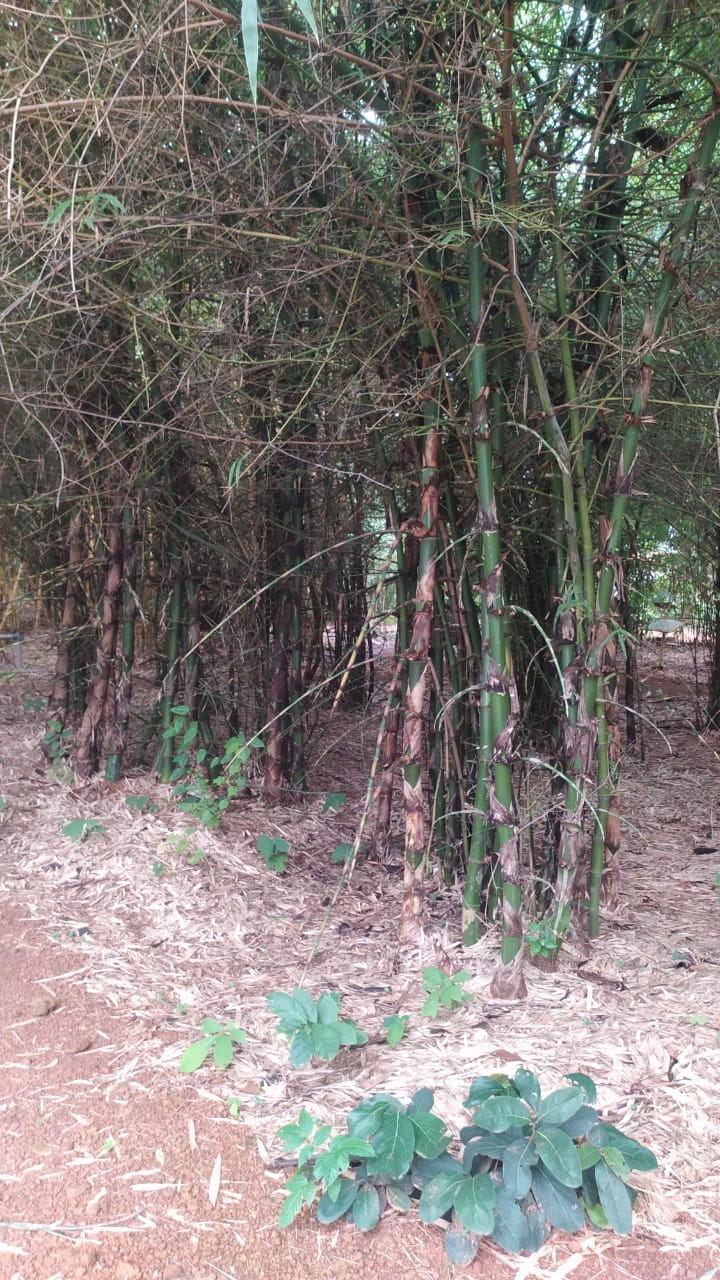Bambusa bambos var. gigantea

Bambusa bambos var. gigantea
commonly known as Giant Thorny Bamboo, is a tall thorny bamboo species with a variety of Bambosa bambos, having sharp thorns. This is largest species of genus bambusa . The culms of this bamboo species grow to a height of 40 meters with a diameter upto 25 cm. The leaves of Bambusa bambos var. gigantea are broad lanceolate in shape, measuring 15-30 cm in length and 8-15 mm in width. Inflorences and anormous paniclebranehlets spickate with loose clusters of five pale spikelets. fruits a carypsis, elliptie Bambusa bamboos var. gigantea thrives at elevations of 1000-1250 meters and is commonly found in subtropical and tropical regions, particularly near rivers and water bodies. This species grows well in well-drained loamy soils with moderate moisture content. It is widely distributed across Northeast India, the Western Ghats, and parts of Southeast Asia, and has been introduced to regions such as Sri Lanka, Myanmar, and Malaysia. For optimal growth, Bambusa bambos var. gigantea requires an annual rainfall of around 2000-2500 mm. In flat alluvial soil the culm are reported above 30 mts. height.
The inflorescence of Bambusa bambos var. gigantea consists of large terminal panicles with clustered spikelets measuring 2-4 cm in length. The empty glumes are ovate, acute, and faintly nerved, while the flowering glumes are larger and fringed with bristles. The stamens are exserted with hairy anthers, and the style is pubescent. Bambusa bambos var. gigantea has a long flowering cycle that occurs every 16-52 years, with the last flowering event reported between 1991-1995 in Assam, Meghalaya, and parts of Arunachal Pradesh. Seed production is rare, and the seeds have a low germination rate.
Propagation of Bambusa bambos var. gigantea is primarily through offsets and rhizomes, along with tissue culture techniques. This bamboo species is widely used in large-scale construction, such as bridges, houses, and scaffolding. Additionally, it is used in the pulp and paper industry, for making furniture, decorative items, and agricultural tools, as well as for edible shoots and fencing or boundary markers. shoots and seeds are edible and leaves are used as fodder and medicines. Flowering ctcle reported 30-45 years.
Listen Audio:
Need assistance? BRTC Faculty